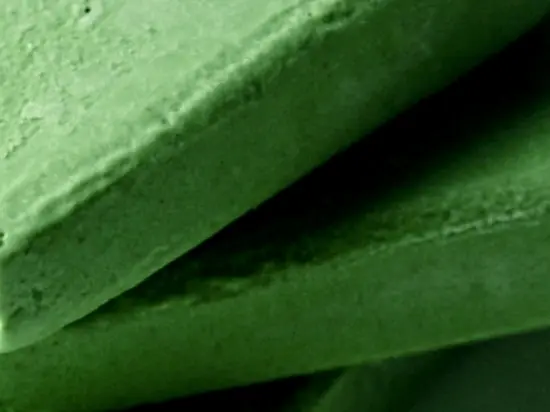
Nannochloropsis sp.
- EPA-Gehalt mind. 3 %
3-7 Wochen

Warum ist frische Paste aus Nannochloropsis in der Aquakultur wichtig?
Als frisches Algenprodukt ist die Paste ein notwendiges Basisfutter für die Zucht von aquatischen Larven und Rädertierchen[5, 6]. Die unverarbeitete Paste lässt sich im Gefrierschrank lange aufbewaren.
Typische Anwendungen: Nannochloropsis sp.
Mikroalgen sind unerlässlich für die optimale Aufzucht von Rädertierchen und Larven.
Typische Anwendungen
- sehr geeignet als Basisfutter für die Larvenzucht in der Aquaristik
- perfekt zur Anwedung der Greenwater-Technik (eingrünen des Zuchtwasser)

ALGANEX Zertifizierungssystem
- ALGANEX garantiert ein qualitativ hochwertiges Produkt ohne Verunreinigungen
- Der EPA Gehalt beträgt mind. 3 %
Produktinformation: Nannochloropsis sp.
Nannochloropsis Paste ist reich an wertvollen Aminosäuren und essentiellen Fettsäuren wie EPA (Eicosapentaensäure), welche für das Wachstum und die Entwicklung von Rädertierchen als auch Larven (Krebse und Mollusken) entscheident ist[3, 4, 5, 6].
Spezifikationen
| Aussehen | grüne Paste |
| EPA-Gehalt | mind. 4 % |
| Trockengehalt | 15 % |
allgemeine Zusammensetzung pro 100 g Trockenmasse
| Rohasche | 10 % |
| Gesamtfett | 16 % |
| Proteine | 49 % |
| Kohlenhydrate | 8 % |
Schwermetalle nach (EG) 1881/2006
| Arsen | < 1 mg/kg |
| Blei | < 1 mg/kg |
| Cadium | < 0,1 mg/kg |
| Quecksilber | < 0,1 mg/kg |
Mikrobiologische Analyse
| Gesamtkeimzahl (aerobe) | < 1 x 104 KBE/g |
| E. coli | nicht nachweisbar |
| Schimmel | < 100 KBE/g |
| Salmonellen | nicht nachweisbar |
| coliforme Keime | < 100 KBE/g |
Quellen:
- Nannochloropsis - M.D. Guiry in Guiry, M.D. & Guiry, G.M. 25 October 2021. AlgaeBase. World-wide electronic publication, National University of Ireland (https://www.algaebase.org/search/genus/detail/?genus_id=44568)
- Nannochloropsis - Wikipedia (https://en.wikipedia.org/wiki/Nannochloropsis)
- Ma XN, Chen TP, Yang B, Liu J, Chen F. Lipid Production from Nannochloropsis. Mar Drugs. 2016 Mar 25;14(4):61. doi: 10.3390/md14040061. PMID: 27023568; PMCID: PMC4849066. (https://pubmed.ncbi.nlm.nih.gov/27023568/)
- Sousa SC, Freitas AC, Gomes AM, Carvalho AP. Extraction of Nannochloropsis Fatty Acids Using Different Green Technologies: The Current Path. Mar Drugs. 2023 Jun 19;21(6):365. doi: 10.3390/md21060365. PMID: 37367690; PMCID: PMC10305002. (https://pubmed.ncbi.nlm.nih.gov/37367690/)
- Guimarães AM, Guertler C, do Vale Pereira G, da Rosa Coelho J, Costa Rezende P, Nóbrega RO, do Nascimento Vieira F. Nannochloropsis spp. as Feed Additive for the Pacific White Shrimp: Effect on Midgut Microbiology, Thermal Shock Resistance and Immunology. Animals (Basel). 2021 Jan 11;11(1):150. doi: 10.3390/ani11010150. PMID: 33440774; PMCID: PMC7827307. (https://pubmed.ncbi.nlm.nih.gov/33440774/)
- Salem MAE, Adawy RS, Zaki VH, Zahran E. Nannochloropsis oculata supplementation improves growth, immune response, intestinal integrity, and disease resistance of Nile Tilapia. J Aquat Anim Health. 2022 Dec;34(4):184-196. doi: 10.1002/aah.10170. Epub 2022 Dec 7. PMID: 36478445. (https://pubmed.ncbi.nlm.nih.gov/36478445/)
Antwort innerhalb von zwölf stunden